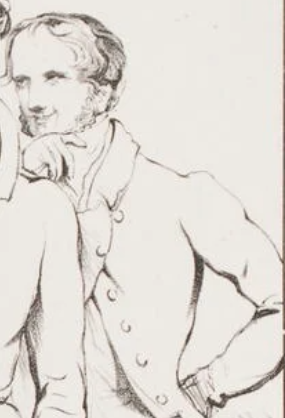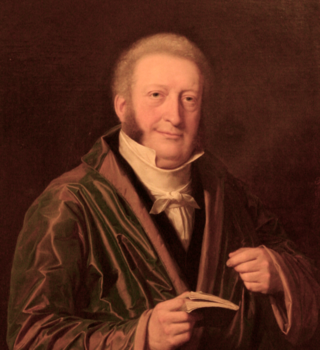
William "Silver Billy" Beldham was an English professional cricketer who played for numerous teams between 1782 and 1821. He was born at Wrecclesham, near Farnham in Surrey, and died at Tilford, Surrey. In some sources, his name has been given as "Beldam" or "Beldum". A right-handed batting all-rounder, he is widely recognised as one of the greatest batsmen of cricket's underarm era. Using an underarm action, he bowled pitched deliveries at a fast medium pace. He generally fielded in close catching positions, mostly at slip and sometimes played as wicket-keeper.

The Reverend Lord Frederick de Vere Beauclerk, a 19th-century Anglican priest, was an outstanding but controversial English first-class cricketer, the leading "amateur" player of the Napoleonic period.

Charles Gordon, 10th Marquess of Huntly, styled Lord Strathavon from 1794 to 1836 and Earl of Aboyne from 1836 to 1853, was a Scottish peer, politician, courtier, and cricketer. He was a Member of Parliament, first as a Tory (1818–1830) and then a Whig.
Charles Cumberland was an English cricketer of the late 18th and early 19th centuries who is known to have played in 26 matches which are retrospectively rated first-class.

The Livingston family of New York is a prominent family that migrated from Scotland to the Dutch Republic, and then to the Province of New York in the 17th century. Descended from the 4th Lord Livingston, its members included signers of the United States Declaration of Independence and the United States Constitution. Several members were Lords of Livingston Manor and Clermont Manor, located along the Hudson River in 18th-century eastern New York.
Charles Warren was an English barrister and politician, judge and amateur cricketer.
Reverend Henry Watson Barnard was an English clergyman and amateur cricketer who played first-class cricket between 1815 and 1823. He served in the Church of England in Somerset and was a canon of Wells Cathedral.
John Barnard was an English amateur first-class cricketer who was a Fellow of King's College, Cambridge between 1817 and 1878. Barnard was the President of the Marylebone Cricket Club in 1829 and a noted collector of decorative porcelain.
Stephen Weston was an English antiquarian, clergyman and man of letters.

The Park was a cricket ground situated in the grounds of the mansion of George Finch, 9th Earl of Winchilsea at Burley-on-the-Hill in Rutland.

Peter Jørgen Frydendahl (1766-1830), was a Danish stage actor. He belonged to the elite actors of the Royal Danish Theatre from 1786. He was described as a versatile actor, was active also as a singer, and particularly noted for his comic roles, for which he was called the most noted of his time. He was also principal of the acting school from 1816.
Through the Napoleonic Wars, county cricket virtually died as cricket was impacted by losses of investment and manpower.